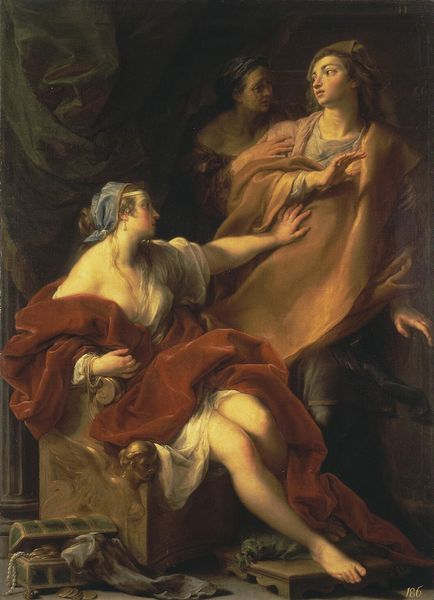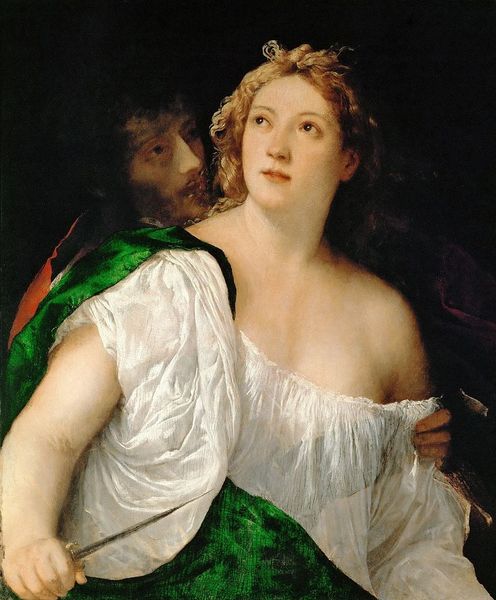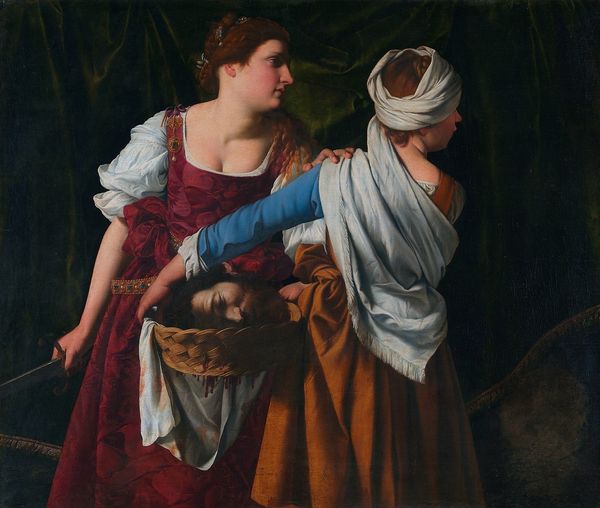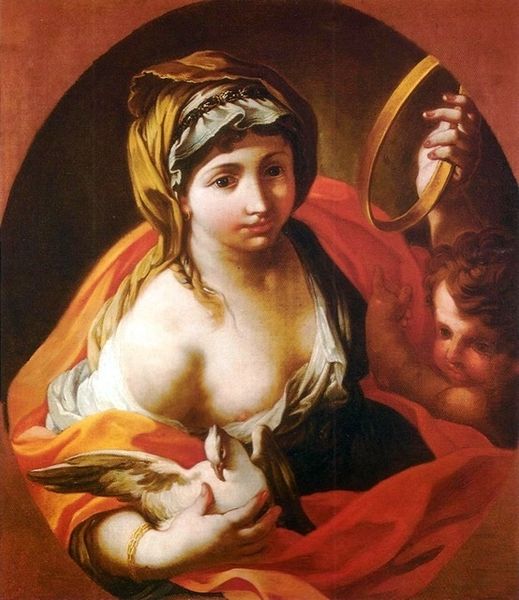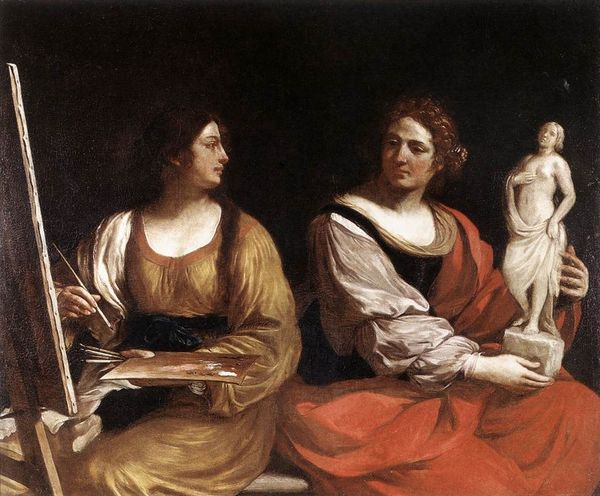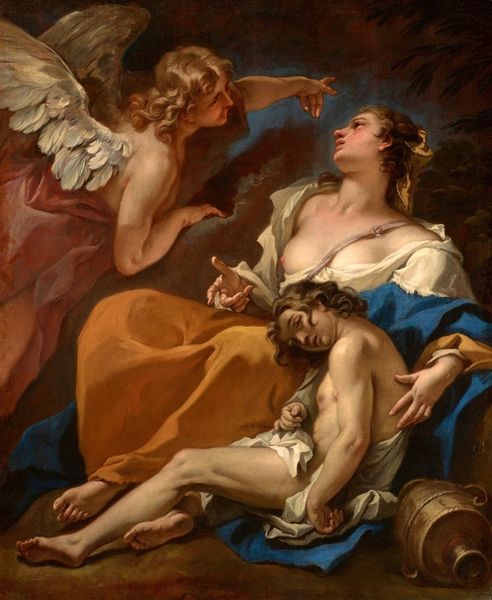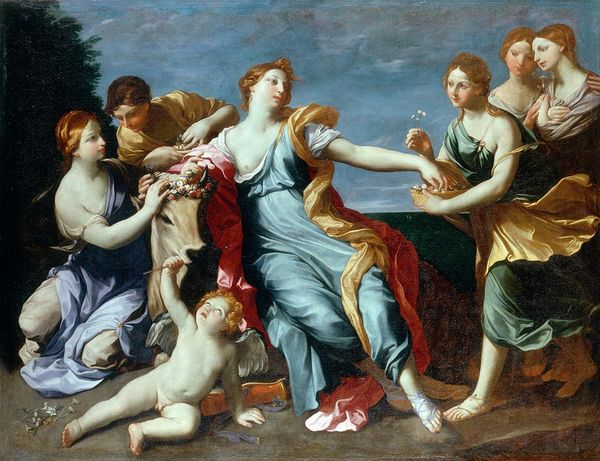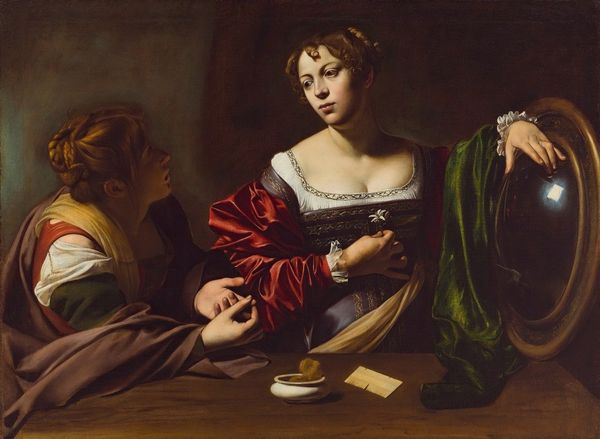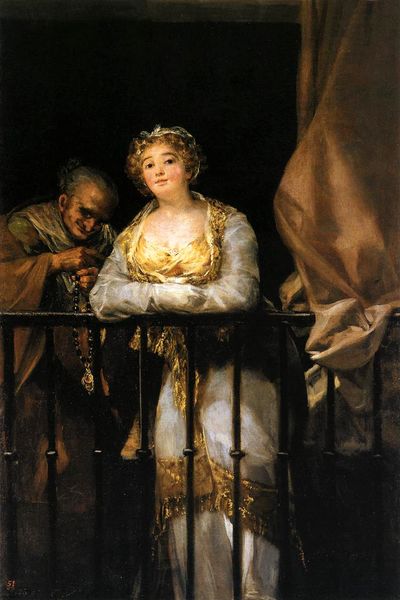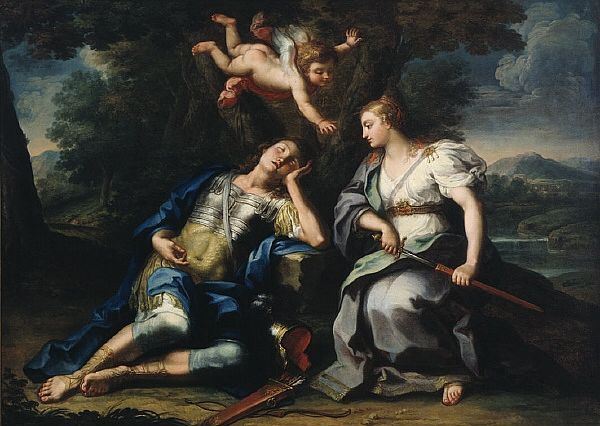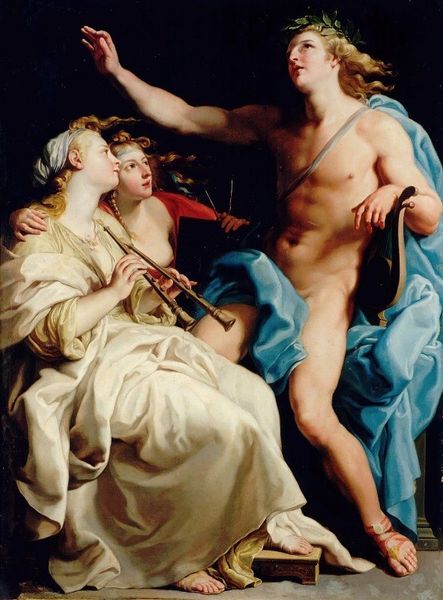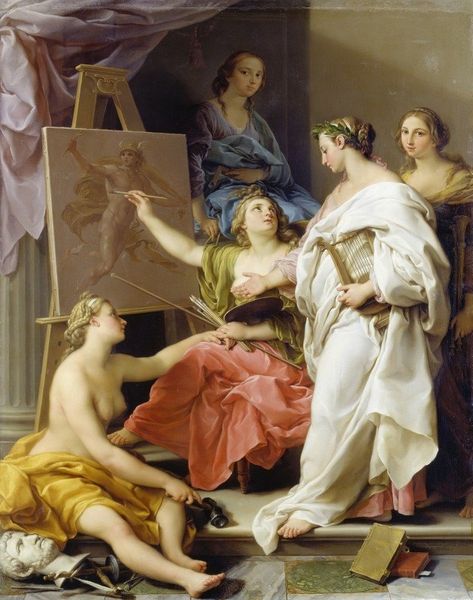
painting, oil-paint
#
portrait
#
allegory
#
baroque
#
painting
#
oil-paint
#
figuration
#
portrait reference
#
group-portraits
#
mythology
#
history-painting
#
lady
#
italian-renaissance
#
portrait art
#
fine art portrait
Dimensions: 114 x 93.5 cm
Copyright: Public domain
Take a moment to look at this 1613 oil painting by the Italian Baroque artist Artemisia Gentileschi (1593-1653). What do you think might be happening here? What are your first impressions? This is ‘Judith and her Maidservant’, a work depicting the moment after Holofernes (a General mentioned in the Old Testament) is beheaded by Judith (a wise Jewish widow). Judith, on the left, is depicted next to her maid Abra. Judith still clutches her silver sword, which is complete with an ornate pommel (handle). Abra holds a wicker basket which contains the decapitated head of Holofernes. We can see droplets of blood seeping from the basket. 🩸 In this painting, the active role of both women is emphasised. Artemisia Gentileschi painted many versions of this story, and returned to the subject of Judith beheading Holofernes several times throughout her artistic career. Why might she have been interested by the character of Judith? As a female artist in a male-dominated art world, Gentileschi may have been drawn to the female religious heroine who is known for her intelligence and shrewdness. Both women turn away from the viewer, instead gazing out of the right edge of the canvas. This creates a sense of mystery and tension – what could they be looking at? There is an incredible level of detail in this work. Zoom in to see the highlights on Judith’s dropped pearl earring, as well as the golden embellishments on her bodice. Gentileschi has created an intense contrast between these glowing jewel tones and the dark, almost black background. This technique is known as ‘chiaroscuro’ and is a key feature of Baroque art. ️
